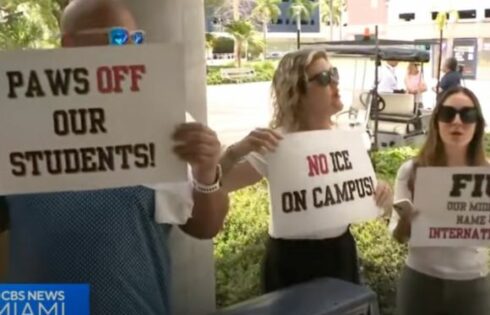
Proposal uses ‘hardship’ as the rubric for granting student loan forgiveness.
President Joe Biden’s Department of Education has proposed a student loan forgiveness plan to take effect after President-elect Donald Trump takes office in January.
While the Department of Education puts the estimated cost at $112 billion, one analyst called it a “gross underestimate” and suggested the cost could be five times larger.
An economist and public policy analyst who spoke to The College Fix also criticized the regulation as “worrisome.”
The department opened comments on Oct. 31, just days before the election. The comment period for the proposed regulation just closed on Monday, Dec. 2. It has been in the works since at least February.
According to the new proposal, this act would “specify the Secretary’s authority to waive all or part of any student loan debts owed to the Department based on the Secretary’s determination that a borrower has experienced or is experiencing hardship related to such a loan.”
The Education Department uses a broad definition of “hardship” as that which is “likely to impair the borrower’s ability to fully repay the Federal government” or that which “renders the costs of enforcing the full amount of the debt not justified by the expected benefits of continued collection of the entire debt.”
Because of this, the final costs are not calculable, according to American Enterprise Institute economist Preston Cooper.
“The subjective nature of the proposal is worrisome,” Cooper told The Fix via email. “Whether a borrower is in ‘hardship’ is left up to the discretion of Education Department bureaucrats.”
While the official cost estimate of the proposal is $112 billion, Cooper told The Fix that “independent analysts at the Committee for a Responsible Federal Budget have estimated that it could cost as much as $600 billion [over the next 10 years].”
The committee submitted its analysis as a comment to the proposed regulation.
“It’s likely they will adopt a maximalist standard of ‘hardship’ in order to forgive as much debt as possible,” he said.
An analyst at the center-left Progressive Policy Institute said the proposal “creates a back door for blanket debt cancellation.”
The estimated $112 billion cost is a “gross underestimate,” Ben Ritz, vice president of policy development for the think tank, told The Fix via email.
A staffer at the Department of Education directed The Fix to a specialist for comment. They have not returned a voicemail request for comment.
President Joe Biden has attempted several student loan bailouts while in office, most notably his 2022 proposal to forgive up to $20,000 in federal student loan debt for Pell Grant recipients, and $10,000 for others earning less than $125,000 annually.
The administration cited a 9/11-era law that allowed for loan modification in cases of “emergencies.” Biden said the coronavirus outbreak gave the Department of Education wide authority to bailout student loan borrowers. The Supreme Court did not buy this argument and struck down the plan in 2023.
Another student loan bailout, called the Saving on a Valuable Education plan, is currently frozen due to legal challenges.
Prior to the massive bailout in 2022, taxpayers had already absorbed more than $32 billion student loans since Biden took office in January 2021, as previously reported by The Fix.
However, some data points suggest people are not being “literally crushed,” by their loans, as White House Press Secretary Karine Jean-Pierre suggested in May of this year.
A report from Mission Square Research Institute, which supports public programs to pay off student loan debt, found “15 percent [of workers] across both the public and private sectors missed their student debt repayments three or more times in the past six months,” as The Fix recently reported.
Meanwhile, recipients of a student loan bailout said they planned to use the money to take a vacation, go out to eat, or buy drugs.
Recipients of the student loan pause that began under President Donald Trump in 2020 also used the opportunity not to pay off debt, but to take on more loans, a University of Chicago study found.
MORE: Trigger warnings placed on classic books
IMAGE: David Lienemann/White House
Like The College Fix on Facebook / Follow us on Twitter






Please join the conversation about our stories on Facebook, Twitter, Instagram, Reddit, MeWe, Rumble, Gab, Minds and Gettr.